
West Hills is a suburban / residential community in the western San Fernando Valley region of the City of Los Angeles, California. The percentage of residents aged 35 and older is among the highest in Los Angeles County.

California Citrus State Historic Park is an open-air museum in the state park system of California, United States, interpreting the historic cultural landscape of the citrus industry. The park’s museum exhibits and interpretive features share the story of the citrus industry's role in the history and development of Southern California, and is told through the experiences of the diverse migrant and immigrant groups who made it all possible. The California Citrus State Historic Park is in the city of Riverside in Riverside County, California, United States. The 248-acre (100 ha) park was established in 1993.
Manzanar was a town in Inyo County, California, founded by water engineer and land developer George Chaffey. Most notably, Manzanar is known for its role in the internment of Japanese Americans during World War II.
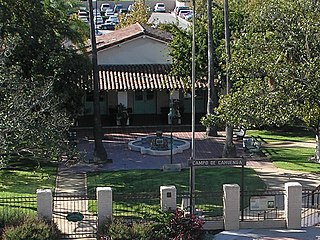
The Campo de Cahuenga, near the historic Cahuenga Pass in present-day Studio City, California, was an adobe ranch house on the Rancho Cahuenga where the Treaty of Cahuenga was signed between Lieutenant Colonel John C. Frémont and General Andrés Pico in 1847, ending hostilities in California between Mexico and the United States. The subsequent Treaty of Guadalupe Hidalgo of 1848, ceding California, parts of Colorado, Nevada, New Mexico, and Arizona to the United States, formally ended the Mexican–American War. From 1858 to 1861 the Campo de Cahuenga became a Butterfield Stage Station.
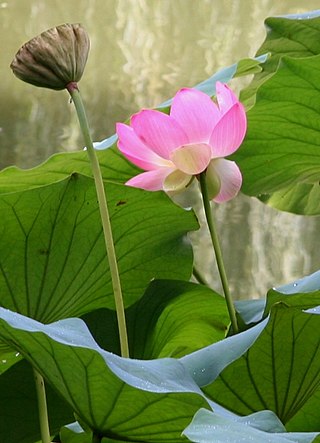
Ganna Walska Lotusland, also known as Lotusland, is a non-profit botanical garden located in Montecito, near Santa Barbara, California, United States. The garden is the historic estate of Madame Ganna Walska. The County of Santa Barbara restricts visitation via a conditional use permit: Lotusland botanic garden is open to the public by advance reservation only, with walking tours 1½ to 2 hours long.
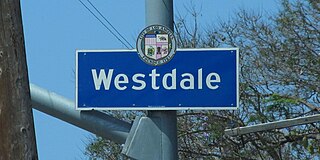
Westdale is a neighborhood in the Westside region of Los Angeles, California. It is represented by the Mar Vista Community Council.

Hancock Park is a city park in the Miracle Mile section of the Mid-Wilshire neighborhood in Los Angeles, California.
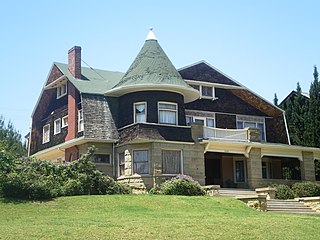
Alvarado Terrace Historic District is a designated historic district in the Pico-Union district of Los Angeles, California. It is located southwest of Downtown Los Angeles, along Alvarado Terrace between Pico Boulevard and Alvarado Street.

Granada Shoppes and Studios, also known as the Granada Buildings, is an imaginative, Mediterranean Revival and Spanish Colonial Revival style block-long complex consisting of four courtyard-connected structures, in Central Los Angeles, California. It was built immediately to the southeast of Lafayette Park in the Westlake District, in 1927.

The Minnie Hill Palmer House, also known as The Homestead Acre, is the only remaining homestead cottage in the San Fernando Valley. The cottage is a redwood Stick-Eastlake style American Craftsman-Bungalow located on a 1.3-acre (0.53 ha) site in Chatsworth Park South in the Chatsworth section of Los Angeles, California.

Shadow Ranch is a historic ranch house, built from 1869-1872 using adobe and redwood lumber, on the original Workman Ranch in the western San Fernando Valley of Los Angeles, California. For much of the 20th century it was in Canoga Park, but it is now within the boundaries of the West Hills community.
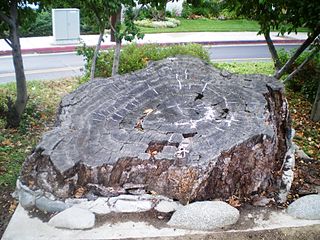
The Encino Oak Tree, also known as the Lang Oak, was a 1,000-year-old California live oak tree, Quercus agrifolia, in the Encino section of Los Angeles, California. It was designated as a Los Angeles Historic-Cultural Monument in 1963.
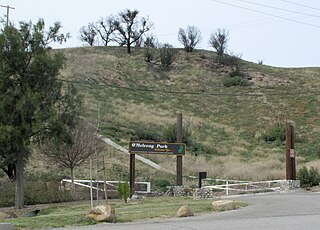
O'Melveny Park is a public park located in the Santa Susana Mountains, in the Granada Hills community of the northern San Fernando Valley, in the northernmost portion of the City of Los Angeles, California.
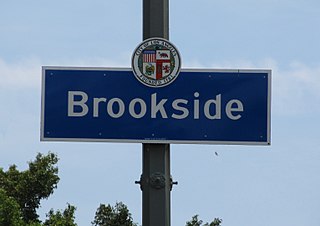
Brookside is a neighborhood in Los Angeles, California. It is an enclave of eight tree-lined streets and 400 homes. The neighborhood consists primarily of one-story and two-story, predominantly single-family residences in various Period Revival styles including Spanish Colonial Revival, Tudor Revival, Mediterranean Revival, and French Revival; later buildings were constructed in the Minimal Traditional and Ranch styles.
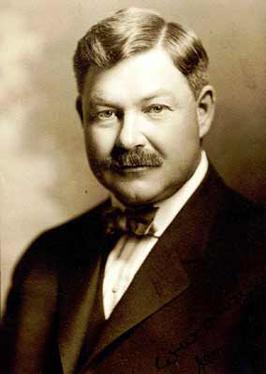
William Warren Orcutt was a petroleum geologist who is considered a pioneer in the development of oil production in California, and the use of geology in the oil industry. He is also known for his contributions to paleontology, which brought the fossils of the La Brea Tar Pits to the attention of the scientific community.

Chatsworth Calera also called Chatsworth Reservoir Kiln Site is one of the few surviving structures of the early 1800s lime industry. This kiln marked the introduction to California of the European industrial process for vitrifying limestone building blocks which were used in the construction of the San Fernando mission and other mission buildings. The word "Calera" is Spanish for "limestone quarry" or "limekiln". Chatsworth Calera is now located in Chatsworth, Los Angeles, California. in the Chatsworth Nature Preserve. At its peak there may have been up to five kilns at the site run by native Indian laborers. Chatsworth Calera registered a California Historical Landmark No. 911.

The Parent Washington Navel Orange Tree is a tree grown by Eliza Tibbets in Riverside, California, in 1873. The Riverside County tree was designated a California Historic Landmark (No.20) on June 1, 1932, at the corner of Magnolia Street and Arlington Street, Riverside. The Bahia, Brazil, Washington navel orange was brought to the United States by the U.S. Department of Agriculture in 1870. The Department of Agriculture imported twelve trees; from these trees, some buds were grafted on to California sweet orange trees. The Washington Navel Orange is also called California Navel Orange.




















